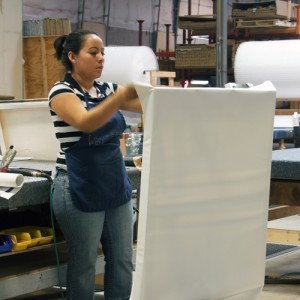How to Choose Quality Canvas for Painting
Artists have used several materials of canvas in painting such as linen, jute, hemp, or cotton. Nowadays, linen and cotton are the most popular fibers in canvas. Linen is more expensive compared to cotton and is often used by professional artists who have years of experience in perfecting their craft. For beginners, a cotton canvas is more appropriate since it is less expensive.
When choosing a canvas, you must consider these two important factors: the support and ground. Support is the material where paint is applied while the Ground is the gesso or primer. These two are important to the success or failure of your painting. The support and ground are determined by the type of paint and method of applying the paint. For example, if you are using a staining technique in painting, when you do it on a raw canvas, it will give a different result when you do the same technique to a primed canvas.
The Support
Choose a canvas that offers strength and stability, depending on your needs for a certain project. As you paint, the support will have to undergo much movement and stress from the environment such as temperature, humidity, and constant stretching/restretching.
Canvas is available in different weights: lightweight (4-5 oz), medium weight (7-10 oz), and heavyweight (18 oz) per square yard. Support with lower weights are not as smooth or sturdy as heavier weights. Medium weight is a good weight for painting since it gives good support to your painting.
The Ground
Why ground is important in a canvas?
- Protection of support. Ground protects your canvas from being damaged by harmful ingredients in paint. Natural fibers such as cotton absorbs moisture and when the paint dries, it will release this moisture, causing swelling and shrinking of the canvas. If you are using oil, the fibers will absorb its moisture, leaving the surface brittle.
- Adhesion of paint. A properly primed canvas allows sufficient adhesion of paint to the support. A correctly primed canvas should accept paint and give a degree of absorbency. Too much absorbency can soak up all the oil from the paint while a non-absorbent ground can leave a weak paint film that can be peeled off. Good thing, pre-primed canvas is available online and in art supply shops.
- Color enhancement. If your project involves transparent painting technique, the ground provides a white background that intensifies the colors. Ground is useful when you are underpainting, or applying the first layer of paint to a canvas.
A chosen canvas varies depending on an artist’s needs. Some may use raw canvas, pre-primed, or a heavyweight canvas. Keep in mind that whatever canvas you choose, it has a big effect on the outcome of your painting.
